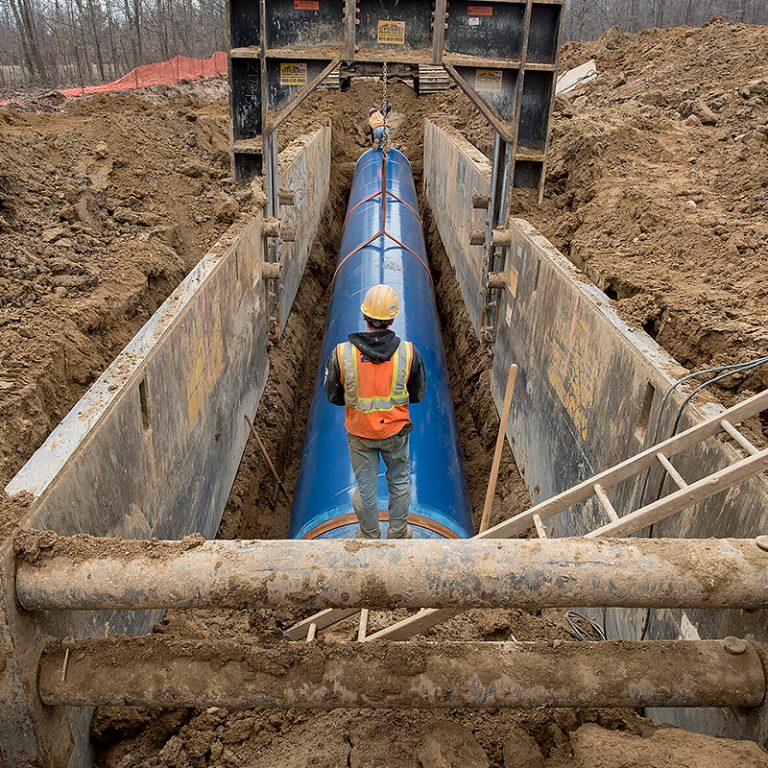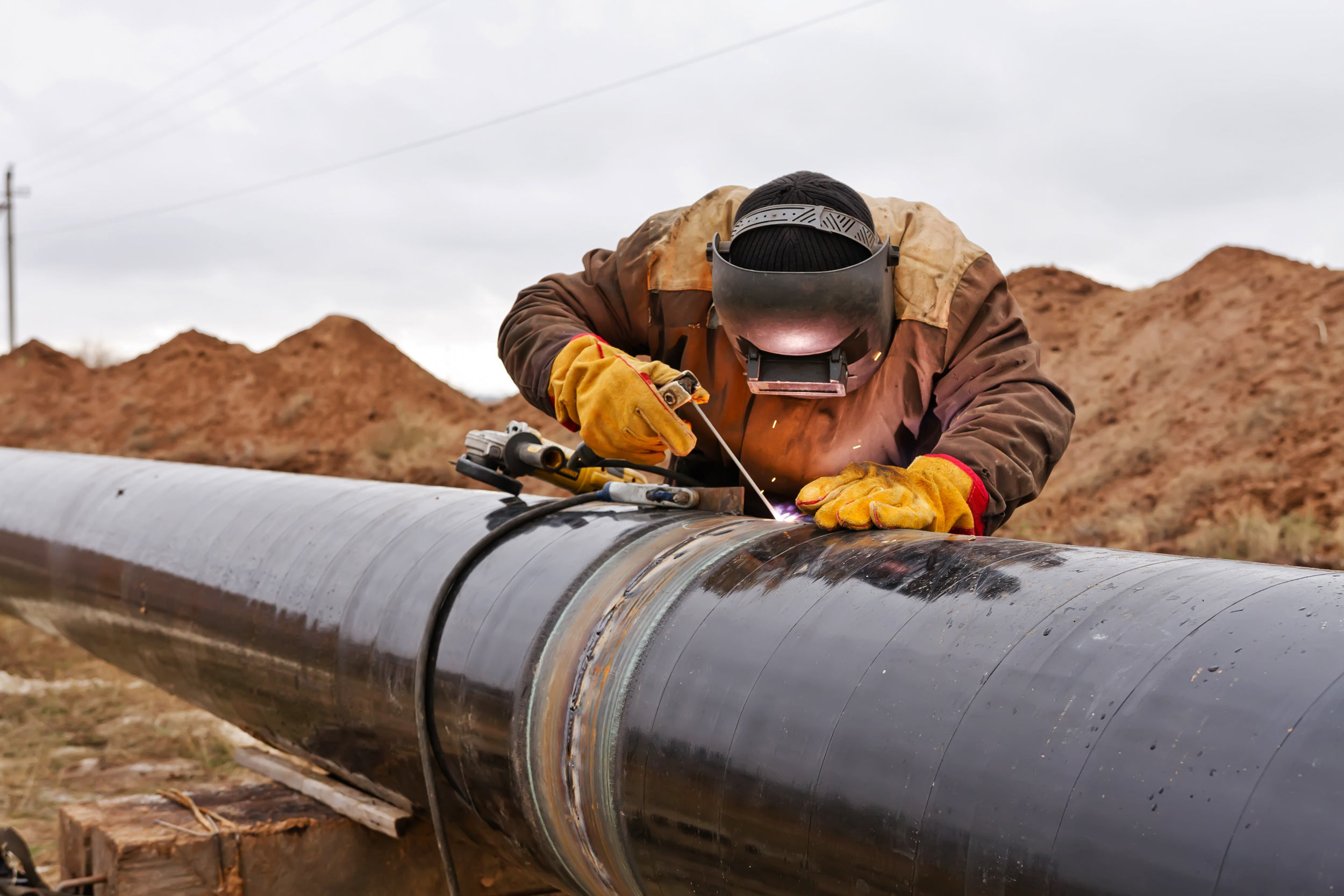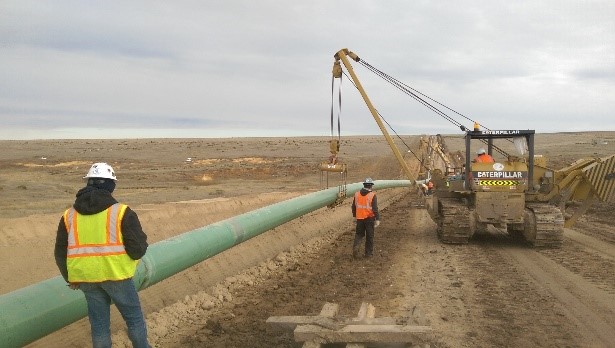How to Maintain for Pipes Installed by Creek Pipe Midland
Recognizing the Basics of Pipes Installation: What You Required to Understand About the Refine
Appropriate pipe installation is important for any pipes system. It requires careful factor to consider of various aspects, consisting of product selection and adherence to local policies. A well-planned format can avoid problems like stress loss, while the right tools guarantee reliable signing up with techniques. Nevertheless, also experienced installers can make common errors. Comprehending these fundamentals can lead to a much more efficient and durable system, motivating a more detailed look at the key components included in the process.
Selecting the Right Products for Pipe Installation
When thinking about pipe installation, the option of appropriate products is crucial to ensuring toughness and capability. Different materials are readily available, each offering one-of-a-kind benefits and factors to consider. As an example, PVC pipelines are light-weight, immune to corrosion, and cost-efficient, making them excellent for residential pipes. Alternatively, copper pipelines, understood for their longevity and capacity to endure high temperature levels, are commonly preferred for heating systems.Additionally, galvanized steel pipes give strength and longevity, appropriate for heavy-duty applications, although they are at risk to corrosion over time.For below ground setups, polyethylene pipelines are favored because of their versatility and resistance to anxiety cracking. Appropriate product option depends upon the specific requirements of the task, consisting of stress rankings, temperature variations, and the chemical nature of the liquids being moved - Creek Pipe roustabout. Inevitably, informed choices relating to pipe materials add considerably to the general success and durability of plumbing systems
Understanding Local Building Ordinance and Regulations
Exactly how can understanding local building ordinance and policies impact pipe installation? Knowledge with these codes is important for making sure that pipe setups are safe, compliant, and effective. Neighborhood building codes describe specific needs relating to products, installation techniques, and precaution, which should be complied with in order to stay clear of prospective lawful concerns and costly fines.Failure to abide can cause inspections being fallen short, delays in job conclusion, or perhaps mandated removal of improperly set up pipes. In enhancement, comprehending zoning laws and policies can influence the sort of products allowed, in addition to the methods utilized for installation.Contractors and house owners alike ought to invest time in evaluating neighborhood policies before starting any installation task. This aggressive technique not just promotes safety and security but likewise boosts the total top quality and resilience of the pipes system, inevitably cultivating lasting capability and complete satisfaction.
Preparation Your Pipe Format and Layout
Proper planning of pipe layout and design is vital for achieving an efficient plumbing system. This process starts with examining the details needs of the space, taking into consideration the place of fixtures and devices. Accurate dimensions ensure that pipelines are properly transmitted, lessening bends and transforms that can result in press loss.Consideration of the flow prices and the types of materials used is essential, as different materials have varying toughness and compatibility with plumbing systems. Additionally, the developer needs to account for future growths or modifications to the design, permitting versatility in situation of renovations.Efficient drain and ventilation are likewise considerable elements of the style, as they protect against clogs and ensure correct waste elimination. Lastly, cooperation with neighborhood building regulations guarantees conformity and security, which is paramount in any kind of plumbing installation project.
Necessary Tools and Tools for Installation
Successful pipe installation depends upon having the right devices and devices available. Crucial devices consist of pipe cutters for clean cuts, wrenches for tightening up fittings, and pliers for gripping and transforming pipes. In addition, a degree assurances pipelines are installed evenly, while a measuring tape aids in attaining accurate lengths.For specific products, a soldering iron may be essential for copper pipes, while a PVC cutter is necessary for plastic options. Safety devices, such as gloves and goggles, secures installers from possible hazards throughout the process.A pipe bender can be especially beneficial for creating smooth contours without endangering honesty, while a torque wrench warranties that connections are safeguarded to the producer's specifications.Having these tools readily offered not just assists in a smoother installation process yet also adds to the general toughness and functionality of the plumbing system. Correct tools is crucial in accomplishing lasting outcomes.
Strategies for Proper Pipe Signing Up With and Sealing
Achieving a secure and leak-free connection between pipes calls for cautious attention to signing up with and sealing techniques. Various techniques exist, each suited to various pipe materials and applications (Creek Pipe near me). Welding is often used for metal pipes, making certain robust connections with warm blend. On the other hand, plastic pipes benefit from solvent concrete or blend welding, developing solid, long-term bonds.Threaded links are usual in both steel and plastic piping, needing specific placement and the use of ideal sealers, such as Teflon tape or pipe dope, to avoid leaks. Compression installations use another alternative, where mechanical pressure protects the pipes together, making them conveniently disassembled for maintenance.Regardless of the technique picked, correct prep work is necessary. This includes cleaning pipe ends and ensuring they are without debris. Applying these methods vigilantly will enhance the long life and integrity of the pipe system, eventually adding to its effective performance
Usual Mistakes to Prevent During Installation
Throughout pipe installation, avoiding usual blunders see here now is vital for making certain a dependable and reliable system. One frequent error is falling short to gauge and reduce pipelines precisely, which can cause inappropriate fittings and leaks. In addition, ignoring to examine the compatibility of materials can cause rust or other damages over time. Improperly safeguarding joints and connections can likewise produce weak factors in the system, triggering prospective failures.Another typical mistake is ignoring the significance of slope and drain; pipes must be mounted at the right angle to assist in appropriate circulation. Insufficient support for pipes can lead to sagging and anxiety, affecting the honesty of the system. Inevitably, overlooking regional codes and laws can cause pricey rework and safety and security risks. By being conscious of these risks, installers can substantially improve the longevity and efficiency of pipe systems.
Upkeep Tips for Resilient Pipe Systems
To assure the durability of pipe systems, regular inspections and cleaning are essential techniques. These measures assist determine possible concerns before they escalate into major issues. In addition, utilizing proper insulation strategies can further shield pipes from temperature fluctuations and environmental variables.
Regular Evaluations and Cleansing
Routine evaluations and cleansing are necessary for preserving the durability and performance of pipe systems. Regularly examining pipes for signs of corrosion, leaks, or clogs can help determine possible issues prior to they escalate right into expensive repair services. Cleansing pipes regularly eliminates build-up that can limit flow and promote damage. It is suggested to set up assessments a minimum of annually, however a lot more frequent checks might be necessary in high-usage atmospheres. Making use of professional solutions for complete cleaning warranties that all debris is efficiently cleared. Additionally, keeping records of inspections and upkeep tasks aids in tracking the system's wellness in time - Creek Pipe pipeline construction. By focusing on these methods, homeowner can boost the reliability and life-span of their pipe systems
Correct Insulation Strategies
Efficient insulation techniques play a crucial useful source function in preserving the efficiency and durability of pipe systems. Appropriate insulation reduces warmth loss in warm water pipelines and protects against freezing in cool water pipelines, considerably decreasing energy prices and prospective damages. Usual products used for insulation include fiberglass, foam, and rubber, each offering varying levels of thermal resistance. It is important to guarantee that insulation is used consistently, covering all revealed locations without gaps. In addition, protecting insulation with proper fasteners aids preserve its placement and efficiency gradually. Regular examinations ought to be carried out to identify damage, guaranteeing timely replacements. By executing these techniques, pipe systems can operate effectively and have a prolonged service life, ultimately profiting both the environment and the homeowner.

Frequently Asked Concerns
Exactly how Do I Identify the Appropriate Pipe Dimension for My Task?
Determining the suitable pipe dimension includes examining the task's circulation needs, stress requirements, and the kind of liquid being transferred. Consulting design requirements and carrying out computations guarantees ideal performance and effectiveness in the installation process.
What Are the Environmental Influences of Different Pipe Products?

Can I Install Pipes Myself or Should I Work with a Specialist?
The question of whether to install pipelines separately or work with a specialist usually relies on the individual's ability level and task intricacy. A specialist might ensure conformity with laws and minimize potential long-term issues.

For How Long Can I Expect My Pipe Installation to Last?
The long life of pipe installation varies significantly, typically lasting 20 to 100 years, relying on materials, installation top quality, and maintenance. Normal inspections and proper Website treatment can improve longevity and protect against early failures.

What Are the Indications of a Failing Pipe System?
Signs of a falling short pipe system include frequent leaks, unusual water stress changes, tarnished water, mold and mildew development, and persistent moisture. Homeowners ought to keep track of these signs to prevent pricey damage and guarantee timely fixings are made.